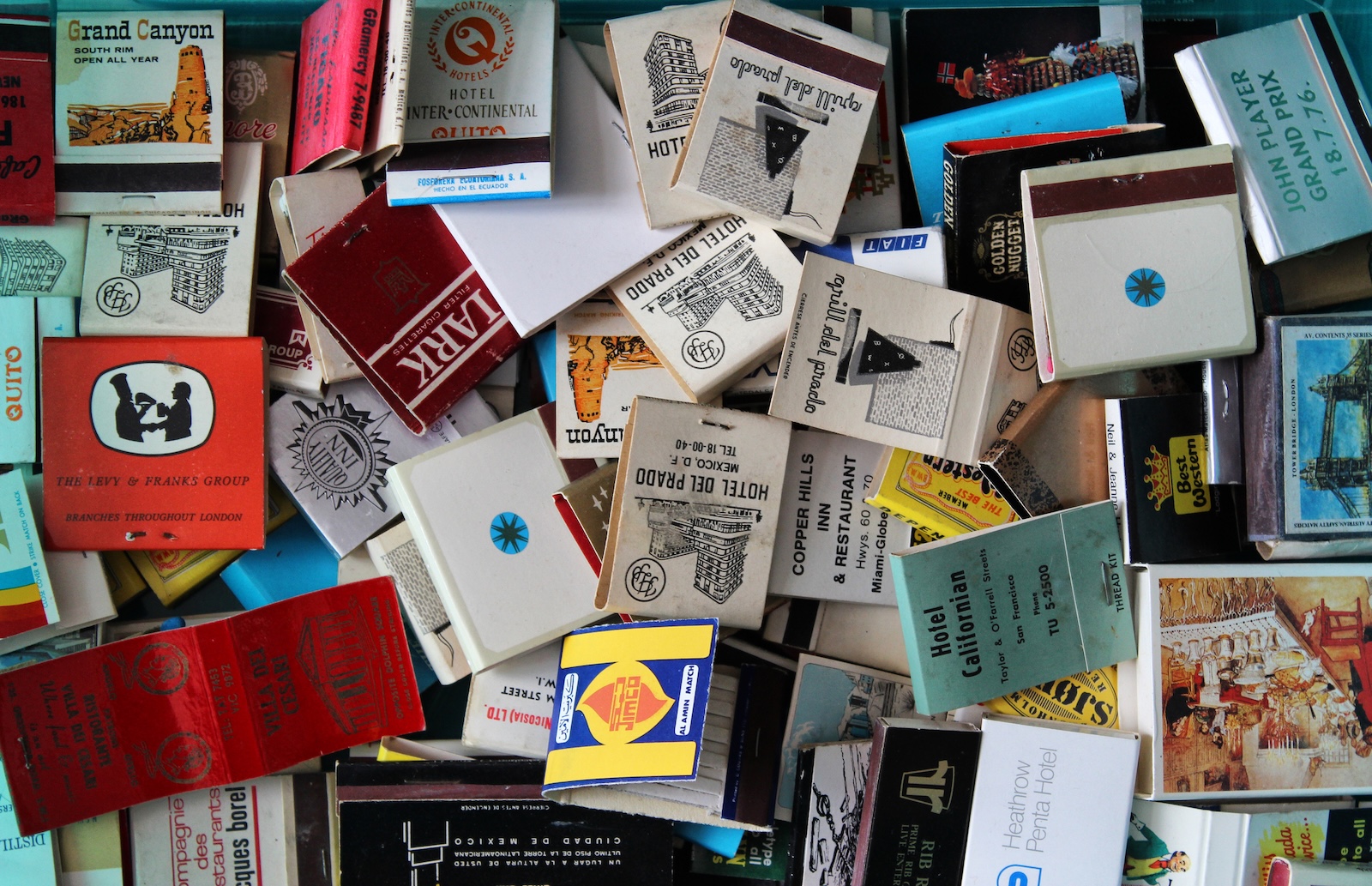Maybe it’s nostalgia — maybe it’s trendy aesthetics — or perhaps just old-school marketing, but restaurants across the country are bringing back the beloved matchbook.
You know the ones. Sitting in a bowl on the edge of the host stand with the restaurant’s name artfully etched on the front. And while smoking in restaurants has been banned since the 2000s, diners aren’t using a matchbook to light up.
Instead, they’ve become much more.
“My best friend lives across the country, and she actually started collecting them first, so whenever I was out somewhere special that had them, I’d grab two: one for her, one for me,” says Tara Shepherd, Senior Account Manager at Eleven Eleven PR. “It became this nostalgic way to remember the meal and also stay connected to each other through the restaurants we love.”
Kaitlyn Sestak, a New York City-based public relations manager, got the idea to start collecting them after her friend had custom matchbooks at her wedding. Since then, her collection has grown and sits in a tall glass vase in her living room. “They are such a fun memento of all of the great places I’ve tried — especially those that may no longer exist — and it’s turned into a fun game of sorts with my husband when we go out. We always check the hostess stand for them,” she says.
But collecting matchbooks isn’t a new trend.
Want more great food writing and recipes? Sign up for Salon’s free food newsletter, The Bite.
Matchbook collector Maryanne Wetherald was inspired by her father’s and uncle’s extensive collections. “I recently looked at them recounting memories of visits to restaurants and Las Vegas. I have my uncle’s collection that spans large plastic tubs,” she says. “It’s dwindled in size and now sits in a blue vase inside the kitchen closet waiting for a need to strike for a candle or the BBQ. I used to never touch them, but now, not wanting to be a pack rat, I use them.”
Amedee Trimmer, Managing Director of Operations, The Noortwyck, says, “To me, matchbooks are a way you can continue to represent your restaurant in someone’s home, and the more creative and unique your matches are, the more likely they’ll keep them. And hopefully, they’ll be a reminder of the great experience they had.”
They’ve also become a bit of a cool decor trend, acting as a conversation starter with artful designs and unique covers. “My favorites are the thick cardstock matchbooks, with funky designs. Funke and Osteria Mozza in Los Angeles are two I love,” says Shepherd.
“My place is pretty minimal, and I don’t have a ton of decor, so that busy little bowl of different designs is my bit of funky with memories and color all wrapped into one. The designs are so good, too: my Seneca Trattoria one from San Diego has flat matches with little goldfish and wine motifs—way cooler than the usual wood sticks—and the cover has gold-foil lettering that makes me smile every time,” says food blogger Sara Strasbaugh.
We need your help to stay independent
And for some, it’s a full-blown hobby. Phillumenist Bailey Disler (phillumeny is the practice of collecting matchbooks) has put together a Google Map with 450 restaurants, stores and hotels in New York City that have branded matchbooks.
“My girlfriend’s grandpa used to collect matchbooks, and last summer, he gave me a really sentimental one, really solidifying my place in the family, and we both wanted it to become our thing,” she says.
So every weekend, Disler and her girlfriend have an “adventure day” where they meander around a different neighborhood. “Whenever we got hungry, my girlfriend would open some old website that had a list of restaurants with matchbooks broken down by borough.” Because she often found the information was outdated, Disler decided to put one together herself.
“I’ve also genuinely found it beneficial for my social anxiety to have to ask if they have matchbooks. Especially if they say no,” she says. “My brain is more wired to look at a matchbook and remember a ridiculous inside joke we made at that place. For me, it’s honestly less about the food and more about the sentimental value of the matchbooks.”


